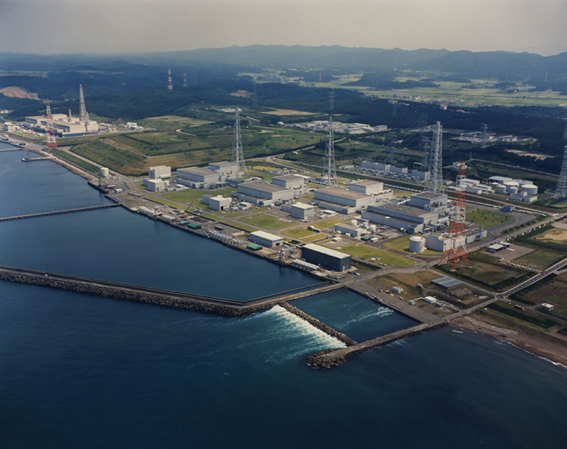The average capacity factor of Japan's nuclear power reactors over the past year has improved slightly with the return to service of two earthquake-affected reactors. Meanwhile, nuclear is expected to increase its share of Japanese electricity generation from 30% to around 40% over the next decade.
 |
| Kashiwazaki Kariwa: holding down average Japanese capacity factors (Image: Tepco) |
All seven units at Tokyo Electric Power's (Tepco's) at Kashiwazaki Kariwa were shut down in July 2007 following a violent earthquake, removing some 7965 MWe from available capacity. After extended shutdowns for inspections and repairs, units 6 and 7 resumed operation in August and May 2009, respectively. The remaining five units remain offline.
JAIF notes that, excluding Kashiwazaki Kariwa units 1 to 5, the average capacity factor for Japan's reactors in fiscal year 2009 would have been a more respectful 74.2%.
Some 277.5 billion kWh of electricity were generated by Japanese nuclear power plants in FY2009, up 7.5% on the 258 billion kWh generated in FY2008. It is the third consecutive year in which generation has been less than 300 billion kWh. Historically, nuclear power has provided about 30% of Japanese electricity and this is expected to rise to 40% by 2017.
Globally, capacity factors from boiling and pressurized water reactors like those operated in Japan are around the 85% mark. Most reactors operate at around 100% capacity for 12- or 18-month stretches between refuelling, with outages due to unforeseen maintenance jobs or grid issues coming only rarely. One exception is France where the amount of nuclear power on the grid requires some reactors to power up and down with demand.
Nuclear growth
Meanwhile, Japan's Ministry of Economy, Trade and Industry (Meti) expects total electricity demand to increase to 194,140 MW in the year to the end of March 2011, a rise of 2% compared with the previous year.
Meti based its electricity supply plan on the official energy supply and demand outlooks and power development plans submitted by Japanese electric power utilities.
According to Meti, nine power reactors with a combined capacity of 12,940 MWe will start commercial operation by fiscal year 2019, bringing the total number of units in operation to 62 (total capacity of 61,700 MWe) by the end of March 2020. A further five reactors in the planning stage are expected to start up FY2020 for a total of 67 units with a capacity of 68,060 MWe.
Over the next decade, Meti expects nuclear's share of total electricity generation in Japan to increase steadily, from 30.8% in fiscal year 2010, to 36.7% in FY2014 and 41% in FY2019.
Researched and written
by World Nuclear News




_91467.jpg)
_47120.jpg)
_16439.jpg)






